Software plays an increasingly vital role in conservation, helping to protect and manage biodiversity through innovative technological solutions. It also facilitates collaboration among researchers, local communities, and governments, empowering them to develop sustainable conservation strategies. However, many of us working in conservation tech don't have the benefit of a large team of software experts to collaborate with or bounce ideas off of. We aim to change that.
This group is for anyone interested in applying software to conservation and wildlife research. Whether you're a developer eager to contribute to conservation or a newbie with valuable data and ideas but limited software experience, this group connects people with diverse expertise. It provides a space for asking questions, sharing resources, and staying informed about new technologies and best practices. We are also committed to supporting technologists and conservationists from the Global South, ensuring that everyone has access to the tools, knowledge, and opportunities to contribute meaningfully.
Our goal is to foster collaboration and avoid "reinventing the wheel" by sharing solutions, whether it's an application, design approach, or a simple script. We also aim to lower barriers to entry by offering mentorship and guidance and providing feedback on technical ideas. This supportive community is a place to learn, connect, and contribute to the advancement of conservation through software. Whether you're looking for software and mobile app developers to help you with your conservation tech needs, have questions about development, are looking for resources, or would like to share your own app, software, or gaming tools, this is the group for you!
Resources
Header photo: Trevor Hebert
Group curators
Wildlife Protection Solutions (WPS)
Software Engineer in Conservation Tech



- 2 Resources
- 15 Discussions
- 10 Groups
Wildlife Protection Solutions (WPS)
Director of Technology at Wildlife Protection Solutions. Primarily focuses on leveraging machine learning and advanced data analytics to combat poaching, monitor biodiversity, and predict environmental threats.
- 0 Resources
- 1 Discussions
- 5 Groups
No showcases have been added to this group yet.
WILDLABS & Wildlife Conservation Society (WCS)
I'm the Bioacoustics Research Analyst at WILDLABS. I'm a marine biologist with particular interest in the acoustics behavior of cetaceans. I'm also a backend web developer, hoping to use technology to improve wildlife conservation efforts.
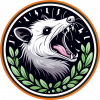

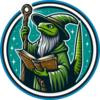


- 41 Resources
- 38 Discussions
- 33 Groups
- @carlybatist
- | she/her
ecoacoustics, biodiversity monitoring, nature tech
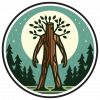


- 113 Resources
- 361 Discussions
- 19 Groups
- @TaliaSpeaker
- | She/her
WILDLABS & World Wide Fund for Nature/ World Wildlife Fund (WWF)
I'm the Executive Manager of WILDLABS at WWF



- 23 Resources
- 64 Discussions
- 31 Groups
- @bluevalhalla
- | he/him
BearID Project & Arm
Developing AI and IoT for wildlife





- 0 Resources
- 55 Discussions
- 8 Groups
Eddy Nnanga is a fisheries engineer specializing in the governance and management of Marine Protected Areas. An expert in biodiversity conservation, ecological monitoring, project management, and community engagement, he mobilizes funding and builds networks.
- 0 Resources
- 0 Discussions
- 4 Groups
- @Adrien_Pajot
- | He/His
WILDLABS & Fauna & Flora
Hi! I am Adrien, a dedicated French ornithologist and engineer committed to biodiversity conservation. I joined the WILDLABS team as a project manager in October 2023!





- 34 Resources
- 142 Discussions
- 3 Groups
- 0 Resources
- 0 Discussions
- 10 Groups
- @Frank_van_der_Most
- | He, him
RubberBootsData
Field data app developer, with an interest in funding and finance




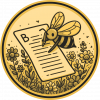
- 57 Resources
- 188 Discussions
- 9 Groups
- @LouisaRC
- | she/her
LRC Wildlife Conservation
With 20 years of experience as a conservation practitioner, I have transitioned from a carnivore scientist to Dean, mentoring Africa’s next generation of conservation leaders. Now, as a consultant, I develop strategies integrating innovative Web 3.0 technologies for conservation.

- 4 Resources
- 1 Discussions
- 4 Groups
I created Snappy Mapper to make gathering geospatial data more accessible for everyone.

- 0 Resources
- 5 Discussions
- 12 Groups
Natural Solutions

- 0 Resources
- 17 Discussions
- 10 Groups
- @stymo
- | he/him
I am a software engineer whose work has included solar energy monitoring and musical generative AI.
- 0 Resources
- 0 Discussions
- 1 Groups
Article
annual license offers available for wildlabs members
21 November 2023
Join the Rainforest Connection & Arbimon team to develop software for biodiversity monitoring!
14 November 2023
A secure platform designed for those working to monitor & protect natural resources. Insight facilitates sharing experience, knowledge & tools to increase efficiency & effectiveness in conservation. By...
7 November 2023
Listen in on our interview with Mara Elephant Project’s Tracking Manager, Wilson Sairowua, as he explains how MEP is using software, geofencing and drone technologies to resolve human-elephant conflict across Maasai...
20 October 2023
Earth Blox makes dataset from Impact Observatory and Vizzuality available to Google Earth Engine developers via the #AwesomeGEECommunityCatalog
16 October 2023
Many people know of the Mozilla Foundation because of the FireFox browser and other open source software they produce together with countless volunteers. Perhaps less well known, the Mozilla Foundation also runs a...
4 October 2023
At Wildya YOU, you will empower people to live happier lives and help nature recover.
4 October 2023
Careers
New senior position in IUCN’s Science and Data Centre. Supporting, developing and maintaining the technological foundation that underpins The IUCN Red List of Threatened species and its underlying database.
24 August 2023
Can you create an ecological data collection application on Android for Gibbon and Biodiversity Research. Check out this opportunity with us!
24 August 2023
In this Conservation Tech Showcase case study from 2022 Conservation Tech Award winner MoveApps, you’ll learn how they’re breaking new ground in animal movement research with tracking data analysis tools hosted by the...
17 August 2023
I wrote a short article on new features in Firetail 11. The most recent version (11.0.3) features some great performance improvements and also fully enables the new reporting module. see also: https://wildlabs.net/...
10 August 2023
Renew Capital is sourcing startups for our next Super Angels Fund and we are hoping to close investments in 20 startups before the end of December 2023.
19 July 2023
Drone Photogrammetry & GIS Intermediate Course


Drone Photogrammetry & GIS Intermediate Course
Drone Photogrammetry & GIS Intermediate Course
Drone Photogrammetry & GIS Advanced Course


Drone Photogrammetry & GIS Advanced Course
Drone Photogrammetry & GIS Advanced Course
August 2025
November 2025
event
June 2025
event
May 2025
event
March 2025
event
48 Products
Recently updated products
| Description | Activity | Replies | Groups | Updated |
|---|---|---|---|---|
| Hi,Wondering if anyone on this board has experience with the fickleness of DFPlayer Minis? I'm using a DFP Mini and ESP32 for some... |
|
Software Development | 1 year 1 month ago | |
| Thanks Carly! I had reviewed some of the help files, but clearly not the right ones!My email is deanc5697@my.uwstout.edu |
|
Acoustics, Software Development | 1 year 2 months ago | |
| Congratulations! My first hydromoth was just arrived yesterday and so excited! Looking forward for the update from your project!!! |
|
Acoustics, Animal Movement, Climate Change, Conservation Tech Training and Education, Data management and processing tools, Emerging Tech, Open Source Solutions, Protected Area Management Tools, Sensors, Software Development, Latin America Community | 1 year 3 months ago | |
| Thanks, and that's a match! All these pictures are from a lab experiment and formated with AmphIdent. We took weekly belly pictures of several larvae. The aim of this google... |
|
Camera Traps, Data management and processing tools, Software Development | 1 year 3 months ago | |
| Hi, this is pretty interesting to me. I plan to fly a drone over wild areas and look for invasive species incursions. So feral hogs are especially bad, but in the Everglades there... |
|
AI for Conservation, Camera Traps, Open Source Solutions, Software Development | 1 year 3 months ago | |
| Thank you Carly, I will definitely take a look. |
|
Acoustics, Animal Movement, Climate Change, Conservation Tech Training and Education, Data management and processing tools, Geospatial, Software Development | 1 year 4 months ago | |
| Hello Friends,Its amazing to see the growing number of organisations working in biodiversity conservation.Biodiversity stories can have a... |
|
Data management and processing tools, Software Development | 1 year 5 months ago | |
| We will be conducting in-person demos of our cutting-edge drone technology in the US this year! 🇺🇸 If you're interested in experiencing... |
|
Animal Movement, Drones, Geospatial, Software Development | 1 year 6 months ago | |
| Hi Danilo. you seem very passionate about this initiative which is a good start.It is an interesting coincidence that I am starting another project for the coral reefs in the... |
|
Acoustics, AI for Conservation, Animal Movement, Camera Traps, Citizen Science, Climate Change, Community Base, Connectivity, Drones, Emerging Tech, Human-Wildlife Coexistence, Open Source Solutions, Sensors, Software Development, Wildlife Crime, Funding and Finance | 1 year 6 months ago | |
| Hi!I would take a look at Although developed for camera trap imagery, it is by no means restricted to such.Cheers,Lars |
|
Camera Traps, Community Base, Data management and processing tools, Drones, Emerging Tech, Geospatial, Software Development | 1 year 6 months ago | |
| I'm also here for this. This is my first comment... I've been lurking for a while.I have 20 years of professional knowledge in design, with the bulk of that being software design... |
|
AI for Conservation, Camera Traps, Data management and processing tools, Software Development | 1 year 6 months ago | |
| Trying to make sense of this brick product, the link provided is a bit vague. The front page talks about SIP trunking, so that implies it's all about telephone connectivity. And... |
|
Software Development | 1 year 7 months ago |
Free online tool to analyze wildlife images
4 August 2025 8:01am
Anyone using InVEST?
10 July 2025 1:31pm
5 August 2025 7:27pm
If you're curious about InVEST I just created a page in "The Inventory" (see link on this page) with some resources and just wanted to hlighlight some potentially interesting models that are worth having a look at!
- Habitat Quality: this model uses habitat quality and rarity as proxies to represent the biodiversity of a landscape, estimating the extent of habitat and vegetation types across a landscape, and their state of degradation.
- Habitat Risk Assessment: this model evaluates risks posed to coastal and marine habitats in terms of exposure to human activities and the habitat-specific consequence of that exposure for delivery of ecosystem services.
Crop Pollination: this model focuses on wild pollinators providing an ecosystem service. The model estimates insect pollinator nest sites, floral resources, and flight ranges to derive an index of pollinator abundance on each cell on a landscape. If desired, the model can creates an index of the value of these pollinators to agricultural production, and attributes this value back to source cells.
7 August 2025 7:40pm
Elsa,
We have been working with InVEST for a number of years. We have found them helpful for conservation and scenario planning. Happy to share as helpful.
John
8 August 2025 2:23pm
Hi Elsa,
We have used InVEST for a pollinator project we supported (the crop pollination model - details here), and looking to using it more for marine and coastal applications so really appreciate the details you shared here!
Cheers,
Liz
Collaborate on Conservation Tech Publications With HAAG
5 August 2025 11:46pm
Offering free help for ocean conservation projects (tech, UX, automation, AI)
28 July 2025 6:48am
28 July 2025 6:40pm
Hello.
I am in need of assistance.
I need a website for a project I am working on.
Thanks 😊
Issue with SongBeam recorder
17 July 2025 9:40pm
24 July 2025 9:19pm
Hi Josept! Thank you for sharing your experience! This types of feedback are important for the community to know about when choosing what tech to use for their work. Would you be interested in sharing a review of Songbeam and the Audiomoth on The Inventory, our wiki-style database of conservation tech tools, R&D projects, and organizations? You can learn more here about how to leave reviews!
MS and PhD Opportunities in Ocean Engineering and Oceanography (Fall 2026)
24 July 2025 5:55am
IUCN Red list R client.
20 July 2025 11:19pm
Executive Director for the Open Science Hardware Foundation
19 July 2025 2:15pm
Join us to turn environmental insight into real-world action
4 July 2025 12:38pm
Tech for Impact Collaboration
2 July 2025 3:41am
Firetail on Bluesky
26 June 2025 1:44pm
Drone Photogrammetry & GIS Advanced Course
 Sean Hill
and 1 more
Sean Hill
and 1 more
24 June 2025 9:31am
Drone Photogrammetry & GIS Intermediate Course
 Sean Hill
and 1 more
Sean Hill
and 1 more
24 June 2025 9:31am
BoutScout – Beyond AI for Images, Detecting Avian Behaviour with Sensors
24 June 2025 1:46am
New Group Proposal: Systems Builders & PACIM Designers
18 June 2025 2:52pm
19 June 2025 9:08am
Hi Chad,
Thanks for the text. As I read it, PACIMs play a role in something else/bigger, but it doesn't explain what PACIMs are or what they look like. Now I've re-read your original post, I'm thinking, maybe I do understand, but then I feel the concept is too big ( an entire system can be part of a PACIM ? ) to get going within a WildLabs group. And you want to develop 10 PACIMS within a year through this group? Don't get me wrong, I am all for some systems change, but perhaps you're aiming too high.
19 June 2025 12:19pm
Hello again sir - PACIMs really mean 'projects' is the way I see it. Each part of the acronym can be seen as a project (if you have an assignment to do, you have a project really).
As for your query on 10 projects in 'this' group - I should ask for clarification if you mean particularly acoustics or in any group (I see now this is the acoustics thread after I selected all the groups for this post). If you are asking on acoustics, you're right - I am unsure on 10 as I am not too keen on acoustics yet. If you are asking 10 projects as a whole like 10 projects in the funding and finance group - I believe 10 to be a very reasonable number. Our projects we have co-created are for the most part replicable, rapidly deployable, quickly scalable, fundable through blended finance and more.
Thank you again for the feedback.
19 June 2025 1:43pm
Thank you for your reply, Chad
I meant 10 as a whole, indeed. Perhaps you see your post in one group, but since it is tagged for all groups, I assumed you meant 10 in total.
In your first post you explain PACIM stands for "Projects, Assignments, Campaigns, Initiatives, Movements, and Systems", so I understood it as more than just projects. Obviously, many things can be packed into a project or called a project, but then, what does it mean that 'Projects' is part of the list?
Well, if you think 10 projects is doable, then don't let me stop you.
Imageomics FuncaPalooza 2025
17 June 2025 6:21pm
Smart Drone to Tag Whales Project
8 June 2025 12:19pm
14 June 2025 12:19pm
I would love to hear updates on this if you have a mailing list or list of intersted parties!
Prototype for exploring camera trap data
20 January 2025 10:23pm
7 May 2025 10:49am
@Jeremy_ For the Python implementation of basic occupancy models (as suggested by @ollie_wearn ), please refer to these two projects:
I second @martijnB suggestion to use spatially explicit occupancy models (as implemented in R, e.g., https://doserlab.com/files/spoccupancy-web/). However, this would need to be added to both of the aforementioned Python projects.
17 May 2025 10:53am
Lively and informative discussion, I would very much like to contribute if there is some active development work with regards to this.
I have recent experience with using Model Context Protocol (MCP) to integrate various tools & data repositories with LLMs like Claude. I believe this could be a good idea/path whereby we can do the following:
1. use the images & labels along with any meta-data, chunk/index/store it in vector db
2. integrate with existing data sources available by exposing the data through MCP server
3. Use MCP friendly LLM clients (like Claude) to query, visualize and do other open-ended things leveraging the power of LLM and camera trap data from various sources.
Regards,
Ajay
13 June 2025 1:38pm
Hi Jeremy,
I am copying here a reply from Juliane Röder, who is not on the forum here:
The GFBio VAT tool seems to do all the desired analysing and visualising stuff - but it isn't specialized on camera trap data. Instead, it harvests GBIF, GFBio data centers, and environmental data that you can combine in any way you want: https://vat.gfbio.org/#/
Documentation with some example code and notebooks is here: https://docs.vat.gfbio.org
A standalone tool for camarea trap data and images is nice, but maybe joining forces and adding some functionality to the VAT tool to better handle camera trap data would be a more sustainable solution...?
The VAT tool can give you some simple statistics of the chosen data (e.g. occurences of wild cats in central Europe in winters 2000-2015), and some simple analyses (wild cat occurences and snow depth). It's focus is on geospatial analyses of occurrence data. They do not have any functionality specific for camera trap data - yet.
My point was, that if you want geospatial analyses and/or additional data to compare to camera trap data, you probably don't have to build a new tool.
I'm not involved with the development of the VAT tool, but I could help with the contact. I know the VAT team.
You can contact her on juliane.roeder@uni-marburg.de.
I did a quick exploration of the VAT tool. It is built quite differently, and my first impression is that it is less accessible; however, as you become more familiar with it, you discover a wide range of options to explore for DwcA occurrences.
I believe it is extremely valuable to also have a tool that works directly with the richest data (Camtrap DP), rather than relying on translated data (Darwin Core), where important details and data structure are lost.
I also think the goals of both tools are different: map-based analysis vs. exploration.
But still usefull to get to know about each other :-)
WILDLABS AWARDS 2025 - Trapper Keeper - a scalable and energy-efficient open-source camera trap data infrastructure
30 May 2025 12:05pm
2 June 2025 10:24pm
Conservation AI Internship (paid) at Conservation International
2 June 2025 4:01pm
AI/ML opportunities
14 April 2025 4:47am
19 April 2025 2:08am
Ritika,
All the best! I hope someone provides a more substantive answer!
I have also graduated with masters in AI and ML recently. Difference being I am at the end of my IT career. I am looking for a career switch to biodiversity, wildlife conservation, sustainability or climate change.
I am trying to do my best to do modern job search. Just warming up to it. LinkedIn, posting relevant posts, being consistent. Virtual networking. In person networking. Being a soon to be fresh graduate, you have access to a huge student networking and academic circle. Keep hitting them consistently and I am sure you will find something.
Share the good news when it happens. :)
Application deadline for Animove, 31May2025
27 May 2025 10:24am
Field-Ready Bioacoustics System in Field Testing
2 April 2025 10:38am
3 April 2025 3:38pm
Hi Carly,
Thanks so much for your thoughtful message—and for introducing me to Freaklabs! BoomBox looks awesome, and it’s exciting to see how closely our goals align. There’s definitely potential for collaboration, and I’d be happy to chat more. Their system is super efficient and I think both of our systems have a place in this space.
Affordability and reliability were key considerations when I started building Orpheus. I wanted to create something rugged enough to survive in the field year-round while still being accessible for conservationists with limited budgets. The full-featured unit is €1500, and the basic model is €800. That pricing reflects both the hardware and the considerable time I’ve spent writing and refining the system—it’s all about balancing performance, durability, and keeping it sustainable for the long term.
Even the base unit is more than just a playback device. It logs every playback event, duration, and species, with enough onboard storage for two years of data, and it automatically converts the logs to line protocol for easy integration into platforms like InfluxDB.
On top of that, Orpheus actively logs and graphs temperature, humidity, atmospheric pressure, and battery voltage. During deep sleep, it interpolates the environmental data to preserve meaningful trends without wasting energy. You can view any of these on it's 5" touch screen or view it in the cross-platform app that will support both Android and IOS once I'm done programming it.
As for audio specs:
- Recording is supported up to 96kHz,
- Playback is full 24-bit, both MP3 and WAV formats
- The system currently supports recording audio clips, reviewing them, and even adding those clips directly to playlists on the device.
That said, for bat research, I know ultrasonic capability is essential. While the current hardware doesn’t capture over 100kHz, I’ve already done the research and identified alternative audio interfaces that would support that range. If that’s a need researchers are interested in, I’d be open to building out a dedicated version to meet those requirements.
Power-wise, it runs indefinitely on solar, even under partly cloudy conditions. It uses a LiFePO₄ battery, and depending on usage, it can operate for up to two weeks on battery alone. It also supports external power from 12V or 24V systems, and solar input from 12V to 70V, so it’s pretty adaptable to various field setups. it also can operate from -5 to 70C (still testing that), but the hardware should be capable according to specs. Your correct though in places like the rain forest that could be challenging and an alternative would need to be considered.
The software is written modularly to allow for expansion based on user needs. For instance, I’ve already integrated support for a rain sensor that can pause playback if the user chooses that, and could easily include PIR, microwave, or other sensors for more specialized triggers.
Regarding durability, I’m currently testing mesh cable sheathing to deter rodents and other wildlife from chewing the wires—this was a concern raised by one of the teams using Orpheus, and I’m designing around it.
Also, Orpheus includes a seasonal scheduling engine—you can define your own seasons (like Migration, Breeding, etc.) and assign unique playback playlists to each. The device uses astronomical data (sunrise/sunset) based on your provided lat/lon and time zone, and automatically adjusts timing offsets like “1 hour before sunrise.” The goal is truly fire-and-forget deployment.
I'm open to adding any features or sensors that might be useful within reason.
I’m curious though, what specs would make a recording device for bats an indispensable tool? What features don’t already exist on the market that should?
Warm regards,
Travis
5 April 2025 4:03pm
I love the look of the system! We almost called our new sensor Orpheus, but decided against it as there is already a microphone named that! I'd love to see a bit more about the technical implementation! Is this running off of a CM5 or something different?
6 April 2025 1:45pm
Hi Ryan, hmm, I had no idea there was a microphone named that. I thought about how it’s used to lure birds for netting, and I like Greek Mythology. I thought it was a perfect fit, but hmm, May have to change the name. I considered using a CM, but i wanted the system to be as efficient as possible. I am using a RPI Zero 2 W with emmc. To ensure the UI stays responsive I used some backend tricks like thread pooling. It works well and resources stay in check. The challenging part is ensuring thread handling is done gracefully and carefully to prevent race conditions. What sort of sensor have you been developing?
AniMove Summer School 2025Application deadline: 31.May 2025
21 May 2025 1:08pm
27 May 2025 10:20am
Software QA Topics
9 January 2025 12:00pm
19 May 2025 5:30am
Hi everyone,
What should we share or demo about Software Quality Assurance?
Alex Saunders and I, the two Software QA people at Wildlife Protection Solutions (WPS) are going to do a community call to knowledge share on software testing and test automation in the 3rd or 4th week of January.
We've listed a few QA topics that we could talk about in this 1-2 minute poll here basketball stars and would like your feedback on topic priority.
Thanks for your feedback and we look forward to connecting! We'll also post when we have an exact date and time pinned down.
Sounds like a great initiative—looking forward to it! I’d love to hear more about your real-world test automation setup, especially any tools or frameworks you’ve found effective at WPS. It’d also be helpful to see how QA fits into your dev workflow and any challenges you’ve faced specific to conservation tech. I just filled out the poll and can’t wait to see what topics get chosen. Thanks, Alex and team, for organizing this!
The Boring Fund 2024 - MoveApps
17 January 2025 12:54pm
2 April 2025 12:15pm
We are pleased to inform you that we have now finalized point 2 and 3. Here some details of the update:
- App browser improvements:
- Improved overview and search: we have added a description of each category and
the search and filtering options are improved. Searching for Apps within a Workflow: we have added the option to include Apps
that are not compatible with the IO type, making it easier to decide if a translator
App is needed to include one of the incompatible Apps.
- Improved overview and search: we have added a description of each category and
- Public Workflows improvements:
- Improved overview: the public Workflows are now organized by categories which
can be also used for filtering. - More information: the details overview contains now the list of Apps included in
each Workflow. - Sharing Workflows: when creating a public Workflow you will have to select one
or more existing categories, but you can also always request a new category.
- Improved overview: the public Workflows are now organized by categories which
Go and check it out in MoveApps!
4 April 2025 2:53pm
That's so great, thanks for the update!
16 May 2025 12:20pm
We are please to inform that we have implemented the point 1 and 4 and with this have finalized the project. The latest improvements:
- Improvement in findability of help documentation: we have started to populate the platform with links (question mark icon) to the relevant
sections of the user manual. - The log files of each App can now be downloaded and when an error occurs directly be sent to MoveApps support. Find more details here.
Again a great thank you for giving us the opportunity to implement these changes. We think they have greatly improved the user friendliness of MoveApps
Prospective NSF INTERN
11 February 2025 10:00am
8 May 2025 8:51am
My name is Frank Short and I am a PhD Candidate at Boston University in Biological Anthropology. I am currently doing fieldwork in Indonesia using machine-learning powered passive acoustic monitoring focusing on wild Bornean orangutans (and other primates). I am reaching out because as a student with a National Science Foundation Graduate Research Fellowship, I am eligible to take advantage of the NSF INTERN program which supports students to engage in non-academic internships through covering a stipend and other expenses, with the only caveat being that the internship must be in-person and not remote. I was wondering if any organizations in conservation technology would be interested in a full-time intern that would be coming in with their own funding?
In addition to experience with machine learning and acoustics through training a convolutional neural network for my research, I also have worked with GIS, remote sensing, and animal movement data through other projects. Further, I have experience in community outreach both in and outside of academic settings, as I previously worked for the Essex County Department of Parks and Recreation in New Jersey for 3 years where I created interpretive signs, exhibits, newsletters, brochures, and social media posts. Now while doing my fieldwork in Indonesia, I have led hands-on trainings in passive acoustic monitoring placement and analysis as well as given talks and presentations at local high schools and universities.
I would love to be able to use this opportunity (while the funding still exists, which is uncertain moving forward due to the current political climate in the US) to exercise and develop my skills at a non-academic institution in the conservation technology sphere! If anyone has any suggestions or is part of an organization that would be interested in having me as an intern, please contact me here or via my email: fshort@bu.edu geometry dash. Thank you!
Hi Frank, your work sounds incredibly valuable and well-aligned with current needs in conservation tech. With your strong background in machine learning, acoustics, GIS, and outreach, you’d be an asset to many organizations. I’d recommend looking into groups like Rainforest Connection, Wildlife Acoustics, or the Conservation Tech Directory (by WILDLABS)—they often work on acoustic monitoring and might be open to in-person internships, especially with funding already in place. Best of luck finding the right match—your initiative is impressive!
Sustainable financing for open source conservation tech - Open Source Solutions + Funding and Finance Community Meeting
 Pen-Yuan Hsing
and 5 more
Pen-Yuan Hsing
and 5 more
1 May 2025 11:52am
No-code custom AI for camera trap images!
25 April 2025 8:33pm
28 April 2025 7:03am
When you process videos, do you not first break them down into a sequence of images and then process the images ? I'm confused as to the distinction between the processing videos versus images here.
28 April 2025 3:57pm
We do, but the way the models handle the images differs depending on whether they're coming from videos or static images. A quick example: videos provide movement information, which can a way of distinguishing between species. We use an implementation of SlowFast for one of our video models that attempts to extract temporal information at different frequencies. If the model has some concept of "these images are time sequenced" it can extract that movement information, whereas if it's a straight image model, that concept doesn't have a place to live. But a straight image model can use more of its capacity for learning e.g. fur patterns, so it can perform better on single images. We did some experimentation along these lines and did find that models trained specifically for images outperformed video models run on single images.
Hope that helps clear up the confusion. Happy to go on and on (and on)...
28 April 2025 5:58pm
Interesting. Thanks for the explanation. Nice to hear your passion showing through.
Overview of Image Analysis and Visualization from Camera traps
28 April 2025 8:09am






















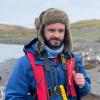
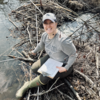

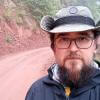

















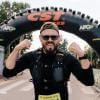









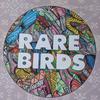
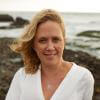











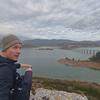
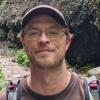

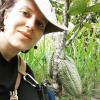

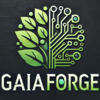




8 August 2025 5:23pm
Hello Eugene, I just tried your service:
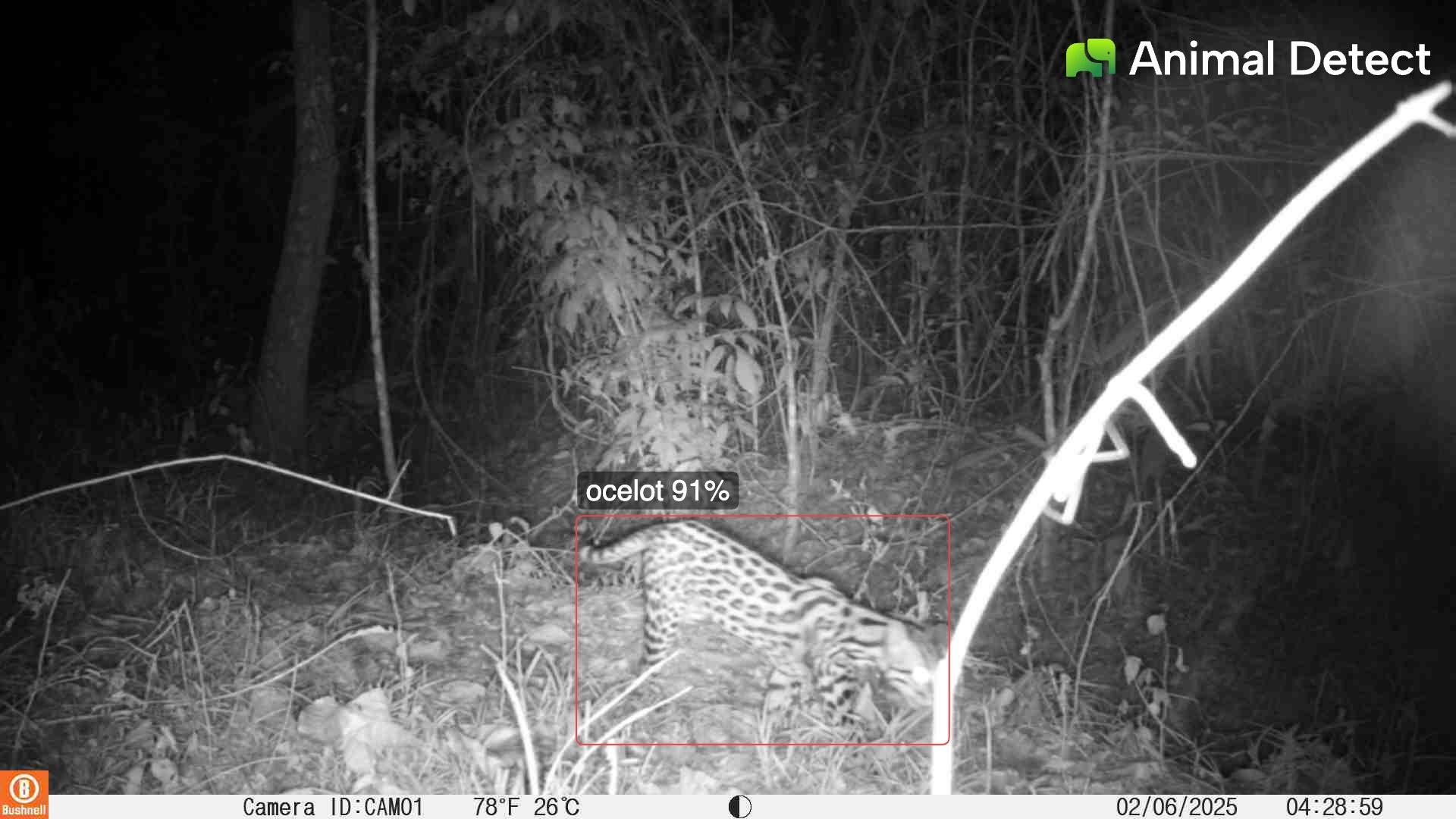
Was wondering how possible will it be to have the option to upload a second image and have a comparison running to let the user know if body patterns are: 'same' or 'different', helping to identify individuals.
Thanks and kind regards from Colombia,
Alejo